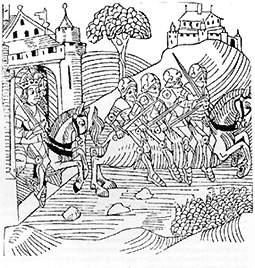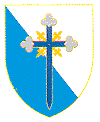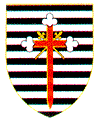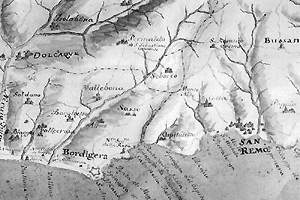 The ancient name of "Castrum Sepulcri" later changed to "Sepulcri Bugrum", then to "Serporca" and ultimately to the contemporary name of SEBORGA. Seborga was an ancient feud of the Counts of Ventimiglia. In 954 Count Guido bestowed the castle, the Saint Michael's Church in Ventimigila and the big portion of land to the monks of Lerins. In 1079 SEBORGA became a Principality of the Holy Roman Empire.
The ancient name of "Castrum Sepulcri" later changed to "Sepulcri Bugrum", then to "Serporca" and ultimately to the contemporary name of SEBORGA. Seborga was an ancient feud of the Counts of Ventimiglia. In 954 Count Guido bestowed the castle, the Saint Michael's Church in Ventimigila and the big portion of land to the monks of Lerins. In 1079 SEBORGA became a Principality of the Holy Roman Empire.

In 1118 the Prince/Abbot Edward ordained the first nine templars (or Knights of Saint Bernard) and the Principality of SEBORGA became the first and unique sovereign Cistercian State in history. In 1127 the nine Templars returned from Jerusalem to SEBORGA. Saint Bernard was waiting for them and ordained Hugues de Payns to be the first Grand Master of Saint Bernard's Knights. SEBORGA remained a Cistercian State until Jan. 20, 1729, when the Principality was sold to Vittorio Amedeo II, of Savoy, Prince of Piedmontand King of Sardinia. But this change was never registered with the kingdom of Sardinia nor the House of Savoy.

Later in 1748, (Treaty of Aquisgrana) the Principality of SEBORGA was not integrated into the republic of Genoa, neither was it mentioned in the Viennese Congress of 1815 as part of the Kingdom of Sardinia, there is no mention of the Principality of SEBORGA in the Act of Unification of Italy in 1861. And last but not least the Principality of SEBORGA has never been considered part of the Italian Republic formed in 1946.
LIGHT SIGN OF KNIGHT ST. BERNARD

 Saint Bernard of Clairvaux, not tall and slim build, of poor health, pale with curly hair yet strong and stubborn arrived in Seborga in February 1117, to join Gondemar and Rossal whom he had sent for June 1113, in order to protect the "Great Secret."
Saint Bernard of Clairvaux, not tall and slim build, of poor health, pale with curly hair yet strong and stubborn arrived in Seborga in February 1117, to join Gondemar and Rossal whom he had sent for June 1113, in order to protect the "Great Secret."
The raining prince at the time was Prince Abbot Edward, born near Tulon, a tall man with a soft heart. In September 1118 he ordained the first Knights Templar who formed the famous "Poor Militia of Christ." They were Abbot Gondemar and Rossal, Andre de Montbar Count Hugues I de Champagne, Hugues de Payns, Payen de Mont Didier, Geoffroy de Saint-Omer, Archambaud de Saint Amand and Geoffroy Bisol.
All left Seborga in November 1118, eight arrived in Jerusalem in the morning of May 14th. 1119, Hugues de Champagne joined them six years later on the same day at the same time.
In 1127 the nine Templars from Jerusalem to Seborga on the first Advent Sunday of 1127.
Saint Bernard was waiting for them together with Friar Gerard de Martigues who in 1112 had formed the order of the Knights of Malta.
In Seborga in the presence of all the population of 23 Knights and over 100 militias Saint Bernard ordained Hugues de Payns to be the first Grand Master of Saint Bernard Knights.
The consecration with the sword was made by Prince Abbot Edward.
In that same day a vow of silence was made between Saint Bernard of the Knights and the Great Bishop of the Cathars to safeguard "The Great Secret."

On the Knights Templars 15 were also the Princes of the Cistercian Principality of Seborga, one of theme Guillaume de Chartres died in Seborga as a result of being wounded in the Holy land. In 1611 the last known vow of silence took place in the presence of father Cesario da San Paolo who also became Grand Master, as a remembrance of this day on every roof of Principality were placed 13 roof tiles with the incision- number 13 the date 1611, the letters C.S., and Templar cross.
- Map from 1759 showing the immediate area around Seborga, click here.
- For a LARGE version of that map, click here.
- Map from middle 1600's showing the immediate area around Seborga, click here.
- For a LARGE version of that map, click here.

|
English |
Russian |
Francais |
Italiano |
Espanol |
Deutsch |
Romanesti |
Portuguese |
Magyar |
